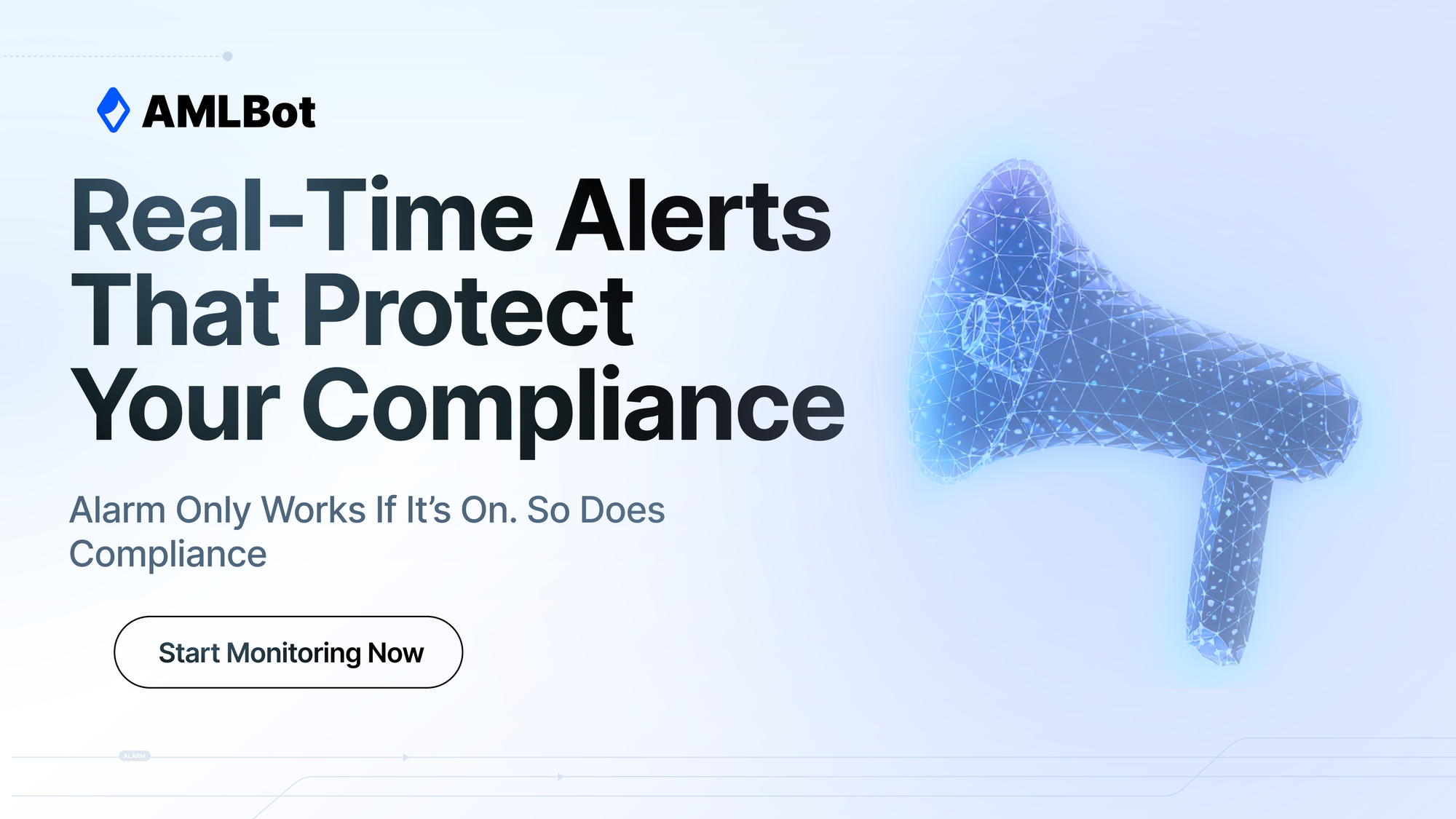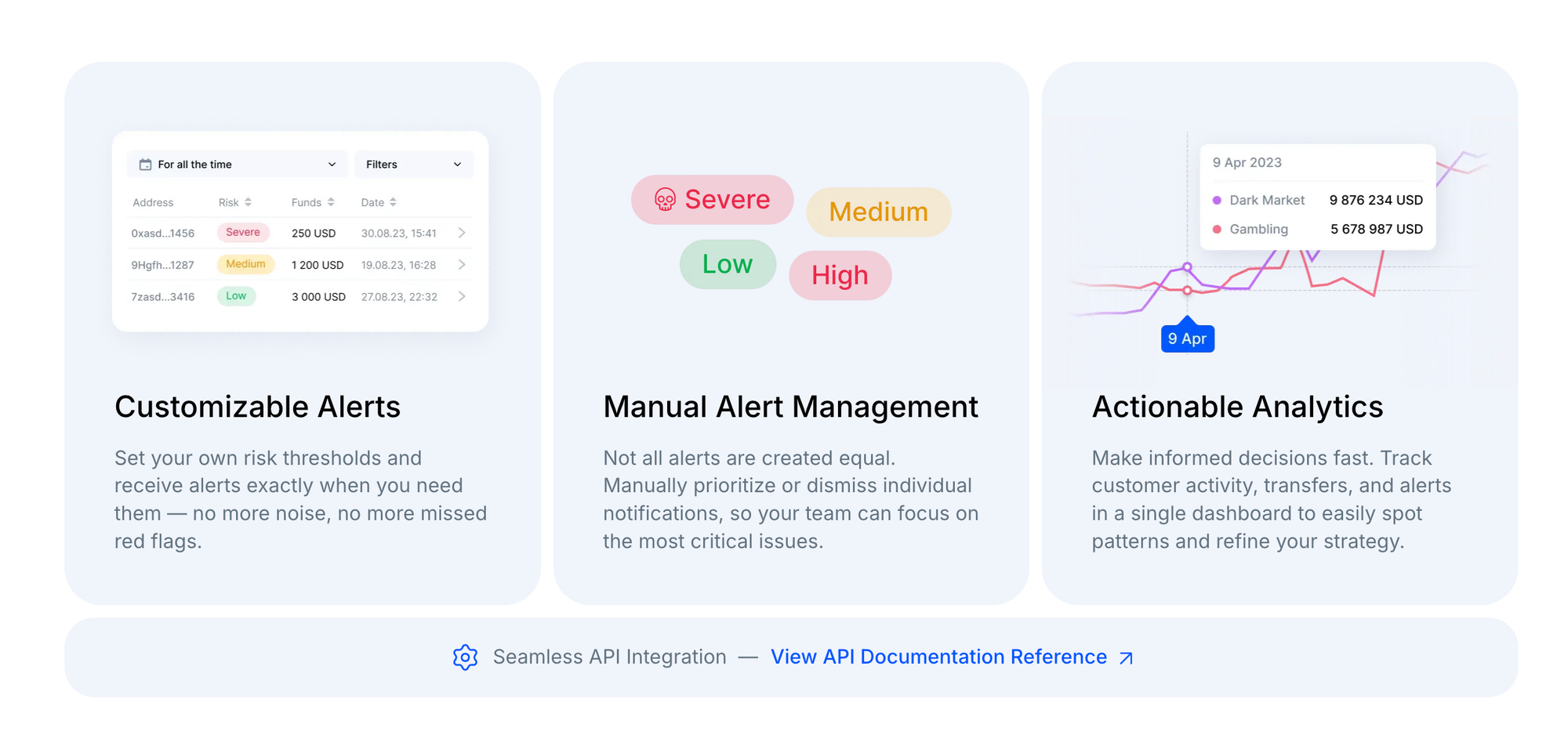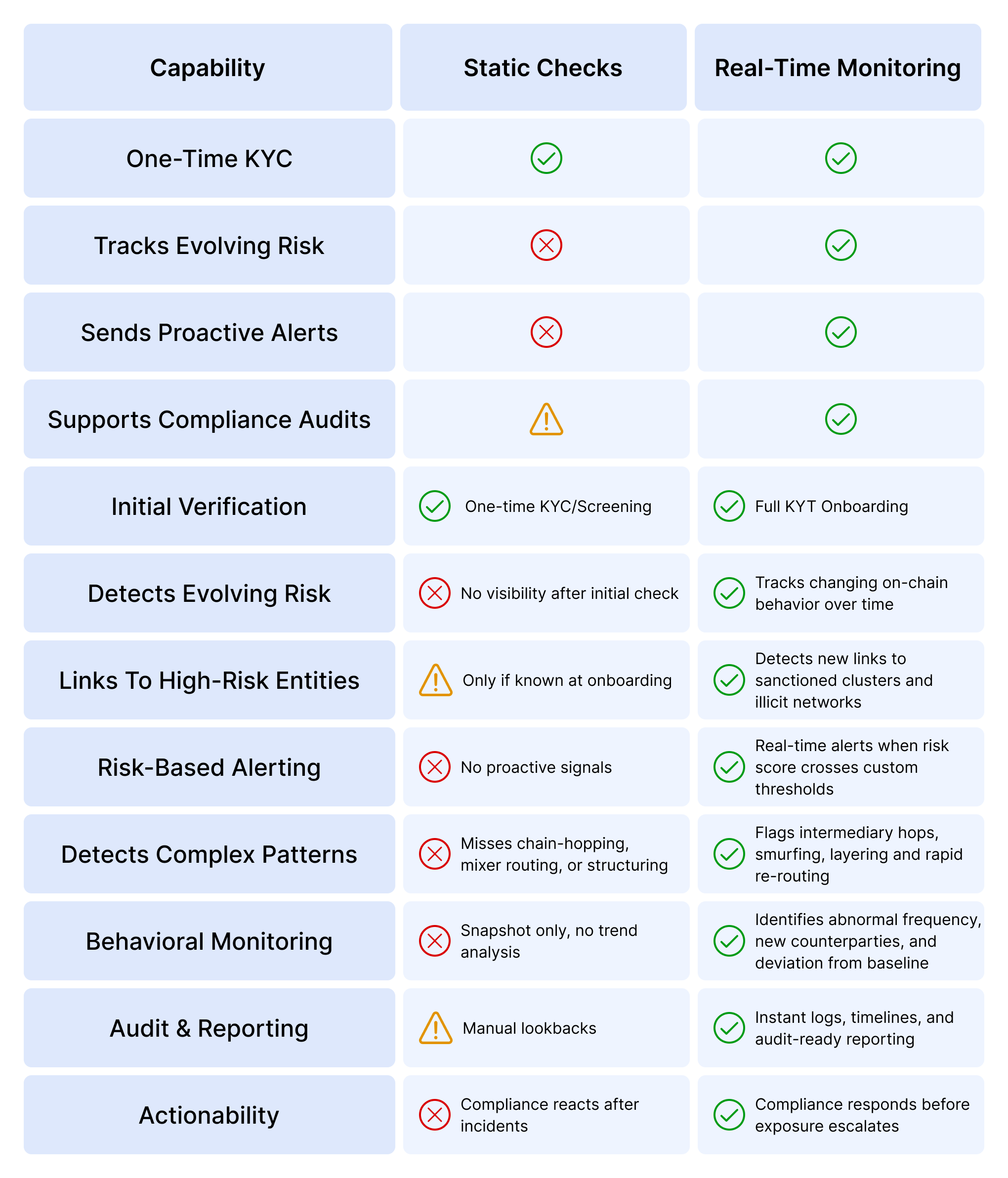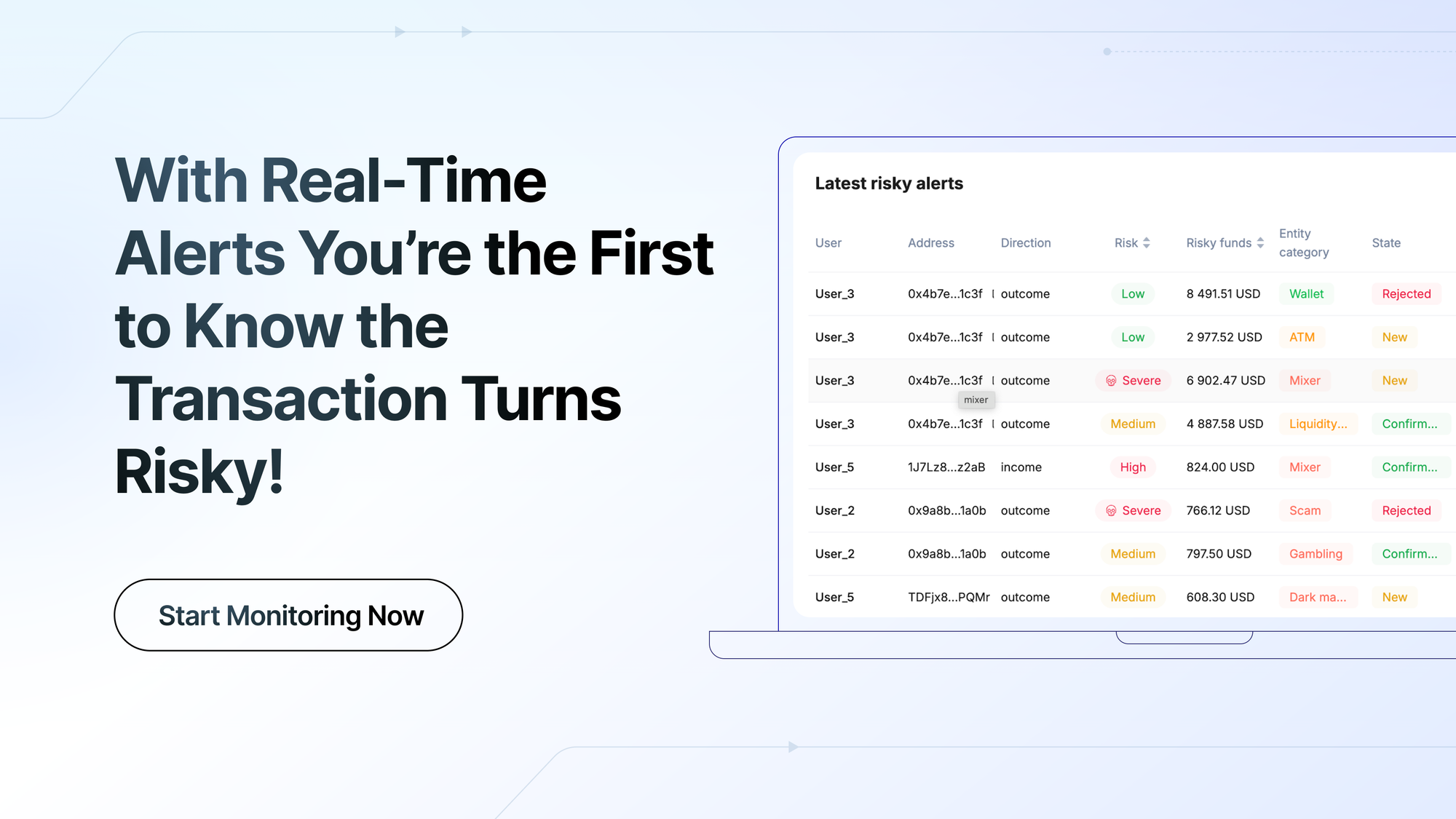Real-Time Alerts: The Alarm System Behind AMLBot’s Transaction Monitoring

Over 40% of wallets flagged as high-risk were once considered safe. Risk exposure changes fast — and response time is everything. A transfer can pass a check today and be tied to a sanctioned entity tomorrow.
Independent 2024 Industry Research found that more than 50% of risky wallets were identified only AFTER initial screening.
Read on for the regulatory “Why” and the operational “How.” 👇🏻
Continuous Transaction Monitoring: Regulatory Expectations in 2024–2025
In 2025, regulators expect crypto firms to employ continuous transaction monitoring rather than one-off checks.
For example, the EU’s Markets in Crypto-Assets (MiCA) regime explicitly calls for “comprehensive programs that address market abuse risks in real time,” including automated transaction monitoring. Similarly, FATF Guidance urge Virtual Asset Service Providers (VASPs) to implement real-time transaction monitoring systems that flag suspicious behavior and track fund flows instantly.
In practice, this means constantly watching all on-chain activity: updates like new sanctions lists or emerging high-risk entities must be applied IMMEDIATELY. Industry trends confirm the shift. By 2025, most major crypto platforms are expected to employ stricter KYC/AML controls, including continuous transaction management and reporting.
Real-Time Monitoring is becoming the new norm. As one analysis puts it, “with machine learning, AML systems are becoming more sophisticated at detecting subtle money laundering tactics,” and real-time monitoring will “become the norm” for catching suspicious transactions quickly. In short, static batch screening is not enough: firms need always-on risk detection and instant alerts when wallet or transaction risk changes.
How Real-Time KYT Alerts Work in Crypto AML Monitoring
Real-Time Alerts Systems continuously re-screen addresses and transactions against updated risk data (blockchain analytics, sanction lists, fraud patterns, etc.). They are tuned to fire immediately when something unusual or high-risk is detected.
Key Alert Triggers Include:
- SUDDEN RISK SCORE JUMP: A wallet’s AML Risk Score exceeds a defined threshold. For example, if a previously low-risk address suddenly receives funds from a newly-flagged source, its score may spike beyond your custom limit.
- CONNECTION TO ILLICIT CLUSTERS: An address that was “clean” becomes linked (via new transactions or on-chain clusters) to known high-risk clusters or sanctioned entities. In other words, an address once considered safe links to illicit activity.
- RAPID INTERMEDIARY ROUTING: Funds move through multiple intermediary wallets in quick succession, suggesting layering or obfuscation. This can hide money laundering or ransom flows.
- STRUCTURING PATTERNS: A sequence of small repeated transactions that aggregate to a large sum (classic smurfing/structuring) can indicate an attempt to bypass thresholds.
- BEHAVIORAL DEVIATIONS: Any unusual transaction patterns, new counterparties, much higher frequency or volume of transfers, or atypical routing, compared to a wallet’s history.
After these key events, a real-time system generates an alert. For example, AMLBot’s KYT Platform continuously re-screens active wallets and transactions against our up-to-date risk database. As soon as a condition is met, for example, a wallet’s risk score climbs past custom threshold, or it receives funds from a newly-flagged address, the system instantly notifies your team. AMLBot allows you to tailor alert rules for your own risk appetite. You can monitor transaction patterns, counterparties, volumes, routing, and more. When an alert fires, our interface will highlight what triggered it (e.g., an outbound transaction to a high-risk cluster or the aggregation of many small transfers). All alerts are logged with details and timestamps, so you get an audit trail suitable for regulators.

Real-Time Alerts for Faster AML Compliance Response
AMLBot’s Transaction Monitoring Alerts were built to close that gap, helping Compliance Teams respond the moment risk changes, not days or weeks later.
Real-Time Alerts Instantly Notify Compliance Teams When:
• A WALLET’S RISK SCORE JUMPS BEYOND THE CUSTOM THRESHOLD.
• A PREVIOUSLY CLEAN ADDRESS SUDDENLY LINKS WITH HIGH-RISK CLUSTERS OR SANCTIONED ENTITIES.
• FUNDS ARE ROUTED THROUGH MULTIPLE INTERMEDIARY WALLETS IN MINUTES.
• STRUCTURING BEHAVIOR APPEARS — SMALL REPEATED TRANSACTIONS WITH OVERALL LARGE VOLUME.
• BEHAVIORAL DEVIATION EMERGES — ABNORMAL FREQUENCY, NEW COUNTERPARTIES, OR UNUSUAL ROUTING.

Static Checks vs Continuous KYT Monitoring

Real-Time Alerts: Not Just a Feature — A Shift in AML Monitoring
With Global AML Standards pushing toward continuous oversight, real-time alerts are becoming a regulatory expectation. Not a bonus.
Want To See How AMLBot Applies These Real-Time Alerts In Action!
Explore our crypto transaction monitoring system for continuous AML oversight and instant risk detection.

*If you’re already using AMLBot KYT, reach out to Support and we’ll enable and tailor your Real-Time Alerts.